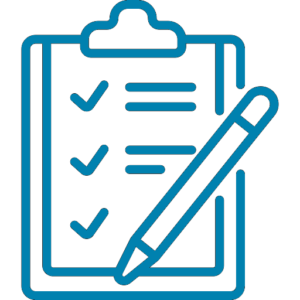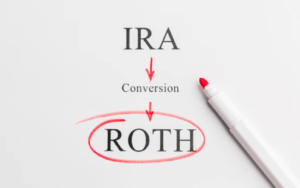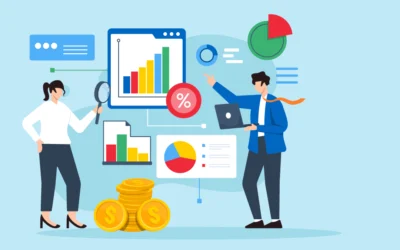As an influencer or marketer, you likely have a lot on your plate. The last thing on many content creators’ minds this time of year is proactive tax planning tips, but that is why this is the perfect time to start. Being proactive with several helpful tax planning tips can give people a head start, but too few take advantage.
This goes beyond simply filing a tax return on time. With a little forethought, you can greatly improve the tax refund you get. You will discover several simple year-round tax planning tips that will make a positive difference.
Table Of Contents:
Smart Tax Planning All Year Round
Effective tax planning goes beyond last-minute scrambling before the deadline. Smart moves made throughout the year can potentially increase tax refunds. Little things add up.
If there are tax credits or deductions, this process may help improve a financial situation. Making a tax payment is a part of the tax process, make the most of it with proper planning.
Review Your Withholdings
Early in the tax year is a perfect time to revisit Form W-4. Check if enough federal tax is withheld from a paycheck. Adjusting withholdings can prevent owing money and can allow one to reach their financial goals sooner.
The IRS Tax Withholding Estimator is a good resource to see what your refund would look like at your current tax rate. Then you can easily determine if an adjustment is needed to your tax situation. File a new Form W-4 to change it.
Lower Taxable Income
Many aren’t aware of the options to reduce taxable income. Retirement plans? Health savings accounts? Yes, contributing to these can make it happen. Contributing to these accounts before tax pay day will be helpful.
Contributing to a 401(k) or traditional Roth IRA reduces taxable earned income. Plus, the amount people age 50+ can contribute each year is increased. You’ve got many ways to pay less in taxes; use them all!
These limits can change, so keep aware of contribution limits as it could affect planning. Be sure to account for contribution matches as part of this. Using your bank’s mobile app to transfer money makes contributions easier.
There are 529 plans; these are for education. Health Savings Accounts (HSAs) offer triple tax benefits for qualified medical expenses.
Although all 401(k) contributions must be made by the last day of the calendar year, contributors to IRAs and HSAs have more time. These accounts are able to contribute up to the yearly tax deadline.
Consider a Roth IRA Conversion
Roth IRAs let qualifying distributions in retirement happen tax-free. But conversions trigger taxes. If distributions are not qualified, that could affect your tax bracket.
One strategy is converting amounts over a span of years. People have more freedom to choose. Filing your taxes can be a breeze! The goals are clear.
Take Required Minimum Distributions
Those 73 or older need to take required minimum distributions (RMDs) from certain retirement accounts by the deadline each year. People that have to, should check up on this. RMD’s must occur, or the individual will face steep penalties.
This could increase taxes since RMDs count as taxable income. People who don’t want income increases should do some planning for their federal tax return. Speak to tax pros for further assistance.
Making a direct Qualified Charitable Distribution (QCD) to an organization could help mitigate the added tax cost. There are certain yearly QCD limits though, which could have changes made to them that are worth accounting for. Discuss with a financial advisor or wealth advisor about qualified charities.
Minimize Capital Gains
Selling something at a profit is considered a capital gain and thus the profits will face capital gains taxes. Thinking about what you have helps with planning.
For example, consider the option of transferring the appreciated property to charity instead. Then no tax deduction would happen on the profits, although, other tax credit effects happen.
Defer taxes through tax-loss harvesting, which involves purposefully recognizing market losses to offset asset gains during a period. This helps for those selling something like a personal loan.
The Benefits of Bunching Deductions
Grouping, also known as “bunching,” certain itemized deductions into a single year is often forgotten. This works well when using your checking account.
Expenses like medical and dental costs often become “itemized” deductions. In order to do so, these need to surpass an IRS tax income amount. Bunching deductions might be useful to help someone reach that income threshold.
Make The Most of Gifting
The IRS permits making gifts without triggering certain other taxes. Take time each year to look at this opportunity before December 31st.
Be aware that this option has limits per person each year, which the IRS could update. For 2024, this gift limit is $18,000 per individual, with limits also existing on lifetime gift exemptions.
More Tax Planning Ideas to Know
While some tax-saving opportunities are limited to calendar days, it’s helpful to keep them in mind. Certain situations may not have the same opportunities and a tax advisor may offer some clarification.
Remember these various ways to lower or offset taxes to see what is practical for your position. Careful tax planning could prevent the need for an installment agreement.
Understand Tax Changes in 2025 and Beyond
Significant changes from the 2017 Tax Cuts and Jobs Act are expected in 2025. Changes should also be looked at ahead of time, because there could be various long-term effects.
As many as a million individuals might soon find that they become unqualified to use this. Planning ahead with your money can really pay off later. Discuss potential ways forward with professional financial planning support.
Consider too if philanthropy will play a role. This all factors in. Planning for your future inheritance. Don’t forget—there are more choices available. Dream big, then start researching what paths are available to you. It’s planning time; let’s get organized and figure this out. Future planning should include this, especially for large expenses. Buying a house? Think about the money involved; it’s a big deal.
Take Advantage of Tax-Loss Harvesting
Tax-loss harvesting occurs when selling off underperforming assets that also went down in value. Then the owner may offset their taxable gain using any incurred loss, up to a legal limit. A person could find this useful; it might even solve a problem for them. Auto loans: A helpful way to buy a car.
This works when assets went down after a loss, that are sold. Remember to adhere to the rules though, like how similar replacements shouldn’t be bought back too soon after the sale. Look up any requirements around this too to save hassle later.
If the assets are worth substantially less in market conditions compared to the cost of holding it. Be prepared though by properly documenting the transaction for tax purposes, since you’re going to need all details when reporting taxes later. Also using your banks mobile app for documents can help.
Track All Locations Worked Out-of-State (or Country)
Tax implications become involved once crossing the border into other locations. States may have many tax requirements that happen as part of a remote work situation, like working in states outside where the owner or company are operating.
Tax laws vary by location so be sure to verify a person or business presence and to comply. Look carefully at rules because states are varied in factors used when figuring how tax applies. Online calculators are available. For example, there’s a… Calculate your loan payments easily. Let me give you a boost.
Maximize Your Retirement Account
Putting money into tax-advantaged accounts may increase funds set aside. Tax savings and long-term financial planning work together. These tools? Super handy. A checking account or money market accounts are common ones.
| Account Type | Standard Limit | Catch-Up Limit (Age 50+) |
|---|---|---|
| 401(k) | $23,000 | $7,500 additional |
| Traditional IRA | $7,000 | $1,000 additional |
Look at employer matching as another key benefit. Always discuss your planning tips before determining how much and where to make account contributions.
Consider the Impact of Section 83(i)
For people receiving Qualified Equity Grants (QEGs), a specific scenario becomes worth looking at to figure if there’s benefit. Think about times when people are given stock options; that’s what this is about.
Consider deferring payment with an 83(i) election for income taxes for five years. Filing has time limits so consider if this choice makes sense, which often benefits workers in cases with private companies. Section 83(i) is a little known tax code.
Leverage 529 Education Plans
Consider setting up a 529 plan for tax-advantaged educational saving. In several locations in the United States, contributors might lower state taxable income by contributing towards these, within limits. These contributions may receive state deductions with varying limits, for those filing state income taxes.
Also worth mentioning: 529 accounts can apply to tuition, fees, room and board, and books. Limits might happen on state amounts to contribute when taxes occur, and there is an added choice with unused account assets that become eligible for tax and penalty-free transfers as a Roth IRA within lifetime constraints. Setting up a direct deposit from your income can be very helpful here.
Maximize HSAs and FSAs
Health savings accounts (HSAs) and flexible spending accounts (FSAs) let people save pretax money. There exist limitations, though, on eligibility or total amount contributions that is beneficial to find. Consider them as part of your overall investment management.
HSA limits for 2024 are $4,150 individually or $8,300 if with an insured family member. Plus FSA limits can be set at $3,200 as part of employee coverage. Always speak to an accountant on how best to go about your financial and legal circumstances.
Knowing how to apply all these accounts as tax benefits requires being clear on restrictions. Work through any applicable questions when optimizing for taxes. Several choices are possible. We all need a place to keep our money safe; bank accounts are perfect for that. Staying organized prevents a mess. A little order goes a long way.
Talking to the right people can really improve your outcomes. Using HSAs can help offset costs of student loans down the road. Be sure to not open any unnecessary business credit cards you won’t use.
Conclusion

Staying proactive by being informed lets people reduce overall tax liability. Proper use of the various types of financial and other planning tools also greatly changes potential tax refund amounts come next April. With the complexity of dealing with both business taxes and individual tax, help may be needed.
While seemingly complex at first, taking time now with many effective tax planning tips, like RMD’s or 529 plans, greatly changes year-end returns. Tax planning is important for many situations whether you are a small business or a W-2 employee. It can even apply for opening a new business bank account and other accounts like checking accounts or CD’s.
Make sure you fully understand things so you do not need an installment agreement later to pay off debt. Also be aware that websites, such as this one, have cookies details for data tracking.



